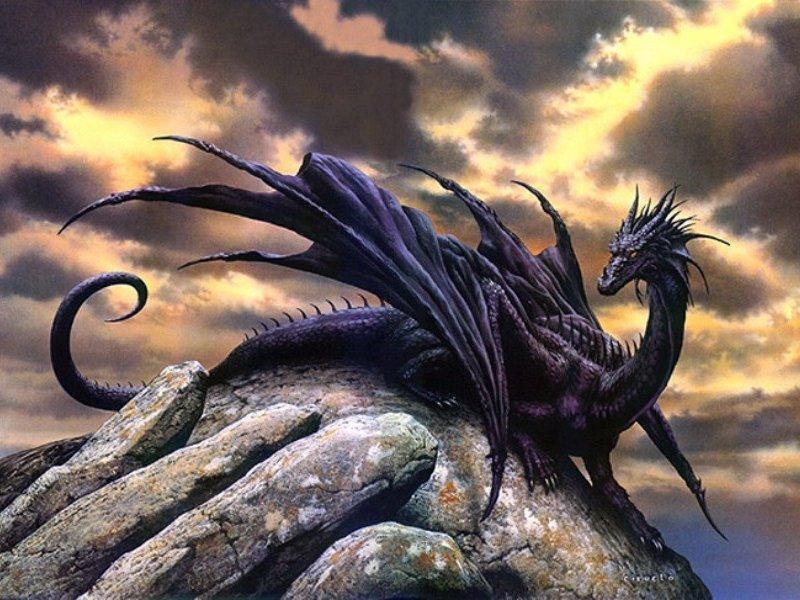Exploring The Enigmatic World Of Dragons In Mythology
Dragons have captured the imagination of cultures around the world for centuries, serving as powerful symbols in mythology and folklore. From the fire-breathing beasts of Western tales to the wise, benevolent dragons of the East, these legendary creatures embody a myriad of themes including power, wisdom, and mystery. In this article, we delve deep into the rich tapestry of dragons in mythology, examining their significance, representation, and the fascinating stories that have emerged around them.
Throughout history, dragons have been depicted in countless ways, often reflecting the values and fears of the societies that tell their stories. They appear in ancient texts, epics, and modern literature, showcasing their evolution from terrifying monsters to revered beings. This exploration not only highlights the diversity of dragon lore across cultures but also emphasizes their role in shaping human understanding of the world.
Join us as we embark on a journey through the realms of dragons in mythology, uncovering their origins, characteristics, and the lessons they impart to us today. Whether you are a mythology enthusiast or a curious reader, this comprehensive guide aims to enlighten and engage you with the fascinating world of dragons.
Table of Contents
- 1. The Origin of Dragons in Mythology
- 2. Dragons in Western Mythology
- 3. Dragons in Eastern Mythology
- 4. Characteristics of Dragons
- 5. Symbolism of Dragons
- 6. Famous Dragons in Literature and Pop Culture
- 7. The Evolution of Dragon Representations
- 8. Conclusion: The Lasting Impact of Dragons in Mythology
1. The Origin of Dragons in Mythology
The concept of dragons dates back to ancient times, with the earliest records appearing in Mesopotamian mythology. The Sumerians depicted serpentine creatures as guardians of the underworld, while the Babylonians featured Tiamat, a dragon goddess symbolizing chaos. Dragons likely emerged from the human imagination as a fusion of various reptiles and large animals, representing the unknown aspects of nature.
1.1 Ancient Civilizations and Their Dragons
Various ancient civilizations contributed to the dragon mythos:
- Mesopotamia: Tiamat as a primordial goddess.
- India: Vritra, a serpent-dragon representing drought.
- Greece: Ladon, the dragon that guarded the golden apples.
2. Dragons in Western Mythology
In Western mythology, dragons are often portrayed as malevolent beings, hoarding treasure and terrorizing villages. This portrayal can be traced back to tales such as those of Saint George and the Dragon, where the dragon symbolizes evil that must be conquered by good.
2.1 The Role of Dragons in Medieval Lore
During the medieval period, dragons became a popular motif in art and literature, representing the struggles between good and evil. They were often depicted in illuminated manuscripts and heraldry, reinforcing their status as formidable adversaries.
3. Dragons in Eastern Mythology
In contrast, Eastern dragons, particularly in Chinese mythology, are revered as symbols of power, strength, and good fortune. They are often associated with water and agriculture, embodying wisdom and protection.
3.1 Cultural Significance of Eastern Dragons
Eastern dragons play a crucial role in cultural celebrations, such as:
- Chinese New Year, where dragon dances are performed for good luck.
- Festivals honoring the Dragon King, a deity associated with rain and storms.
4. Characteristics of Dragons
Dragons exhibit a range of characteristics that vary by culture. Common traits include:
- Physical features: scaly bodies, wings, and claws.
- Abilities: fire-breathing, flight, and shape-shifting.
- Temperament: benevolent guardians in the East vs. vicious beasts in the West.
5. Symbolism of Dragons
The symbolism of dragons extends beyond their physical attributes. They often represent:
- Power and Authority: Dragons symbolize the ruling class and their dominion.
- Wisdom and Knowledge: In many cultures, dragons are seen as wise beings, often imparting knowledge to heroes.
- The Duality of Nature: Representing both creation and destruction, dragons embody the balance of life.
6. Famous Dragons in Literature and Pop Culture
Dragons have made significant appearances in literature and pop culture, influencing countless stories and characters:
- Smaug: The dragon from J.R.R. Tolkien’s "The Hobbit."
- Dragons in "Game of Thrones": Daenerys Targaryen's dragons symbolize her power.
- Toothless: The lovable dragon from "How to Train Your Dragon."
7. The Evolution of Dragon Representations
The representation of dragons has evolved over time, influenced by cultural shifts and artistic movements. From fearsome beasts in ancient texts to beloved characters in modern media, dragons continue to captivate audiences worldwide.
8. Conclusion: The Lasting Impact of Dragons in Mythology
In conclusion, dragons hold a prominent place in mythology across cultures, representing a blend of fear, power, and wisdom. Their enduring legacy continues to inspire stories, art, and cultural practices today. As we explore the multifaceted world of dragons, we are reminded of the rich tapestry of human imagination and the lessons these mythical creatures impart.
We invite you to share your thoughts on dragons in mythology or any favorite dragon stories you have encountered. Feel free to leave a comment below, and don't forget to explore more articles on our site for further insights into the fascinating world of mythology!
Thank you for joining us on this journey through the realms of dragons. We hope to see you again soon!
Exploring The World Of Haikyuu: A Deep Dive Into The Manga Phenomenon
Exploring The Life And Career Of Carina Koff
Exploring Juttaleerdam: The Hidden Gem Of Thailand


